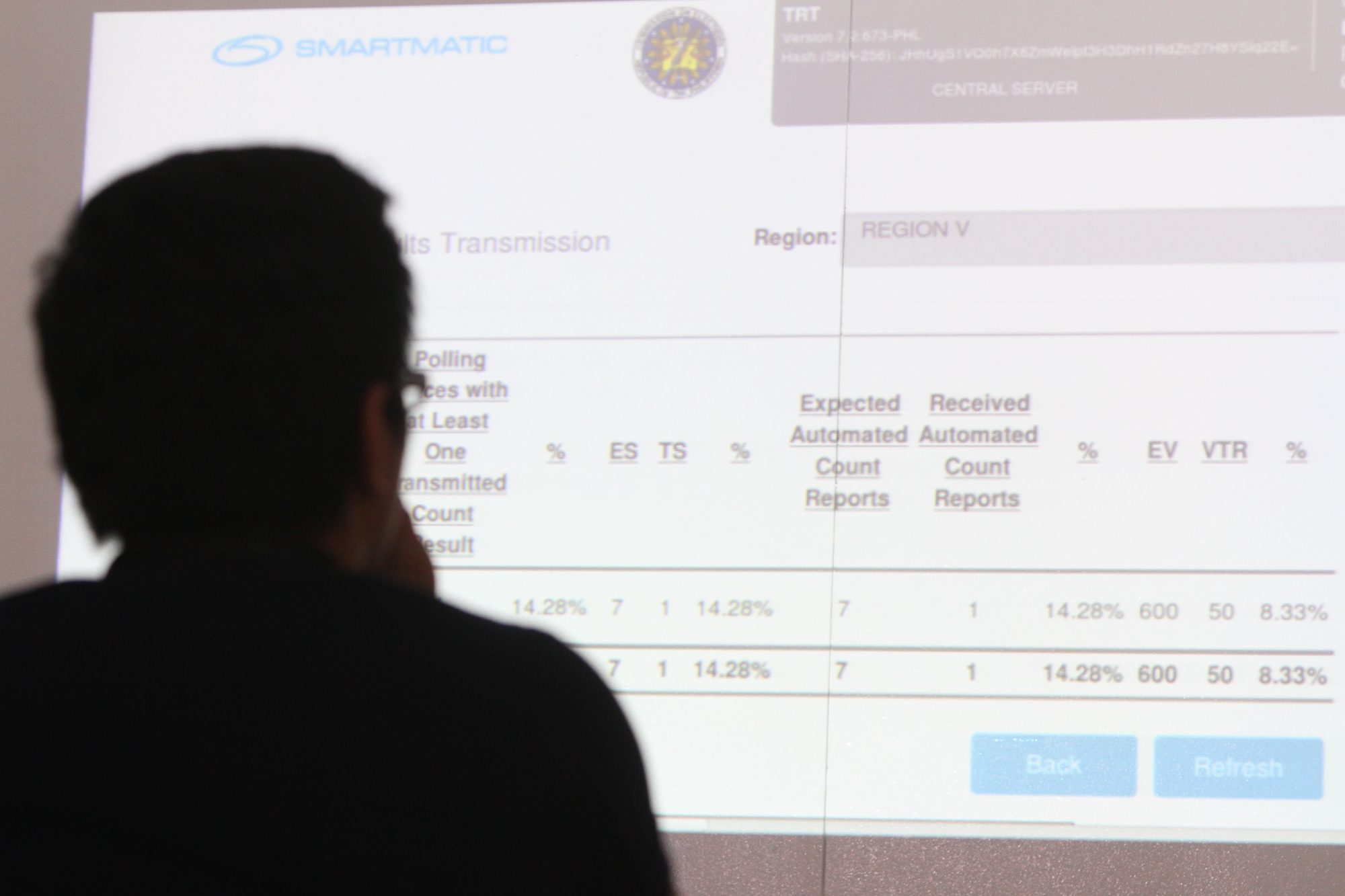SUMMARY
This is AI generated summarization, which may have errors. For context, always refer to the full article.

SANTA ROSA CITY, Philippines – The Commission on Elections (Comelec) on Saturday, April 23, tested the transmission of votes from polling precincts to canvassing centers across the Philippines.
Smartmatic, the provider of the Philippines’ vote-counting machines (VCMs), announced that the votes in the mock canvassing had been 100% transmitted shortly after 6 pm on Saturday.
Smartmatic’s project manager for the 2016 elections, Marlon Garcia, told reporters on Saturday, “This goes to show everybody, ‘Guys, we’re ready for the elections.'”
Smartmatic’s Marlon Garcia says Comelec transmission test today is a success @rapplerdotcom #PHVote pic.twitter.com/R0GfvFfLO2
— Paterno Esmaquel II (@paterno_II) April 23, 2016
This is in stark contrast to the actual transmission rate in May 2013, when the Philippines last conducted national elections. Back then, Smartmatic failed to transmit around 23% of election results from VCMs.
Garcia explained that in 2013, “there were many factors taken into consideration.” One of these was that Smartmatic was “not controlling the field.”
“This time around, we are controlling the field. We are the ones providing technical support in the field. We are manning the National Support Center. And we are better prepared for the transmission platform,” he said.
With this, the Smartmatic official said, the transmission of votes could be 80% finished on election day itself, May 9. Then by noon of May 10, votes could be 100% transmitted.
Smartmatic’s Marlon Garcia sees 80% of votes transmitted by May 9; by May 10, he sees 100% @rapplerdotcom #PHVote pic.twitter.com/USwfpp0K7i
— Paterno Esmaquel II (@paterno_II) April 23, 2016
He said 100% transmission on May 9 would be “a dream come true” if it happens. “But because of the difficulties in geography in the Philippines and the availability of the signal in some of the areas, we may not be able to make it on May 9.”
Poor signal a problem, too
The activity on Saturday simulated the process on election day.
On Saturday, votes had to be transmitted to 3 servers: the Comelec Central Server, the Transparency Server, and the National Board of Canvassers (NBOC).
The Comelec Central Server and the Transparency Server receive the transmitted votes straight from VCMs.
The NBOC, which will declare the final results, gets the votes through a careful step-by-step process.
In this process, the votes from polling precincts have to be transmitted to the municipal canvassing center then to the provincial canvassing center, before being beamed to the NBOC.
During the mock canvassing on Saturday, the transmission to the Comelec Central Server and the Transparency Server finished an hour earlier than the transmission to the NBOC.
Garcia said canvassing should have finished at 1 pm on Saturday if not for a few problems.
One of these was the swapping of ballots in Digos City in Davao del Sur and Pateros in Metro Manila. The correct ballots had to be shipped to both locations, prompting a late transmission of votes.
He said another problem was poor signal in a number of areas that he couldn’t identify as of posting time.
The chairperson of the Parish Pastoral Council for Responsible Voting (PPCRV), Henrietta de Villa, said she hopes the Comelec will address a number of transmission problems seen in 2013.
One of these problems is permitting the manual or physical transfer of USBs containing election results to the “next transmission level”, which means municipal or provincial canvassing centers.
“Kung physical transfer, parang that defeats the automation purpose. Dangerous, baka na naman merong naka-intervene, baka ‘ka ko nagkapalit, ‘yung mga ganoong type,” the PPCRV chairperson said.
(If there’s physical transfer, it seems to defeat the purpose of automation. Dangerous, there might be someone who’ll intervene, there might be switching, those types of problems.)
PPCRV chair Tita de Villa on what she doesn’t want to happen in vote transmission this year @rapplerdotcom #PHVote pic.twitter.com/nxJWSraHGw
— Paterno Esmaquel II (@paterno_II) April 23, 2016
De Villa said the Comelec should lessen this “so that we can improve on the credibility of the elections.” – Rappler.com
Add a comment
How does this make you feel?
There are no comments yet. Add your comment to start the conversation.